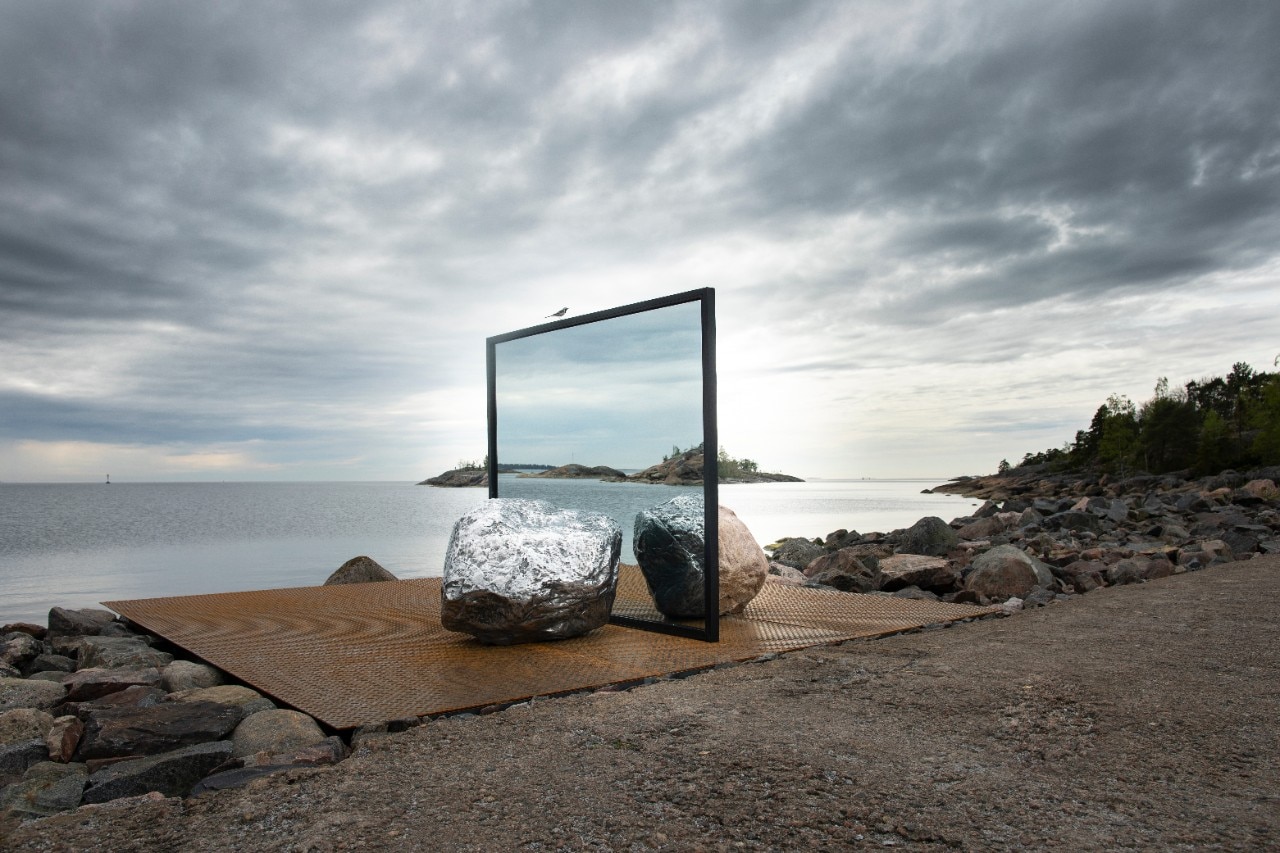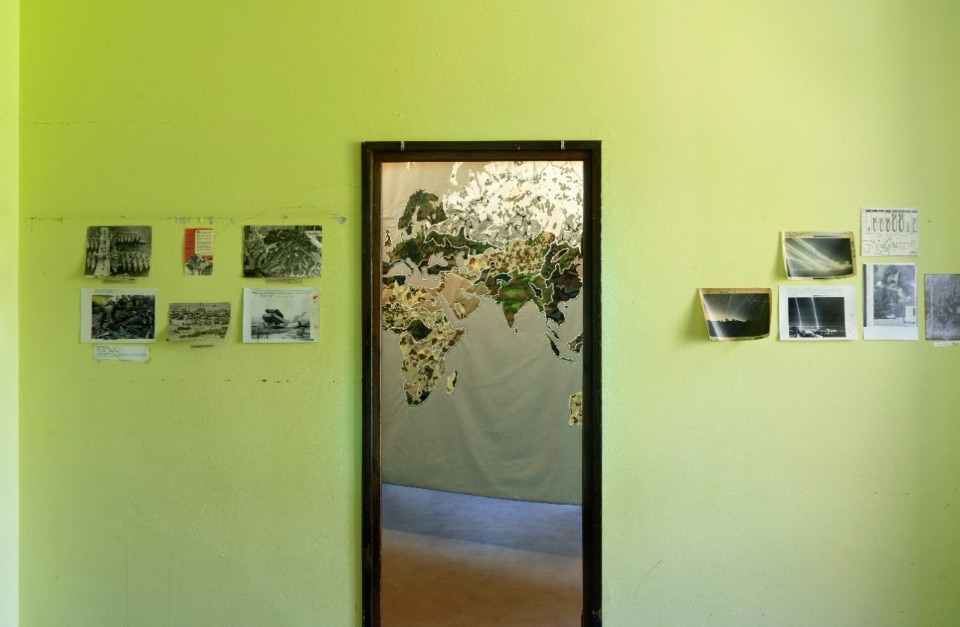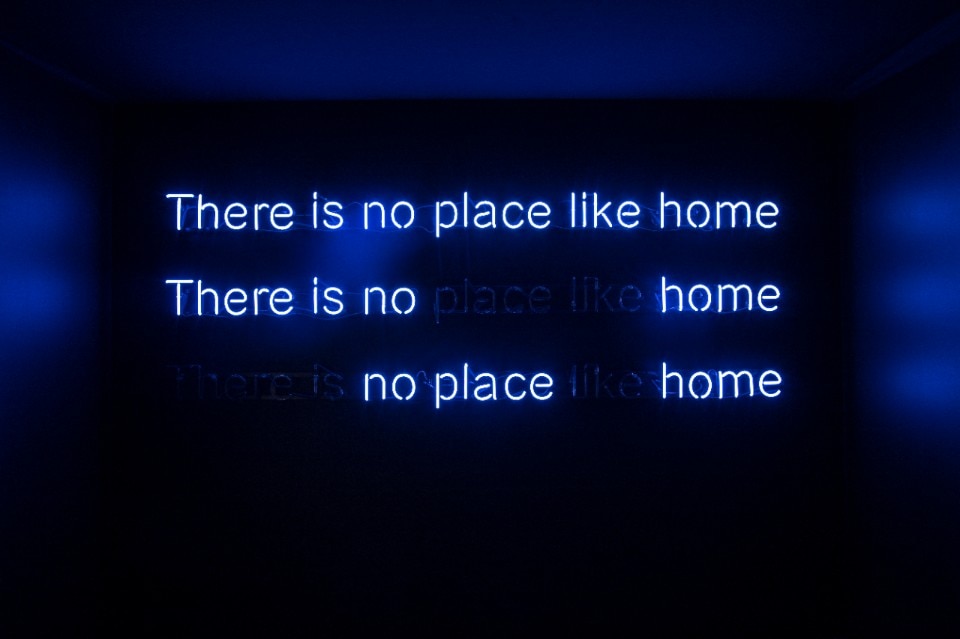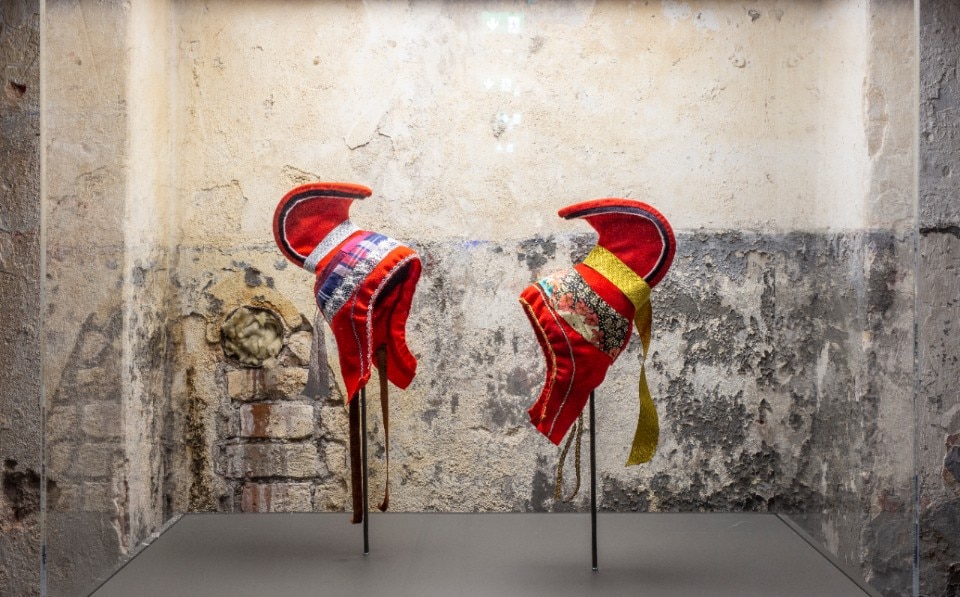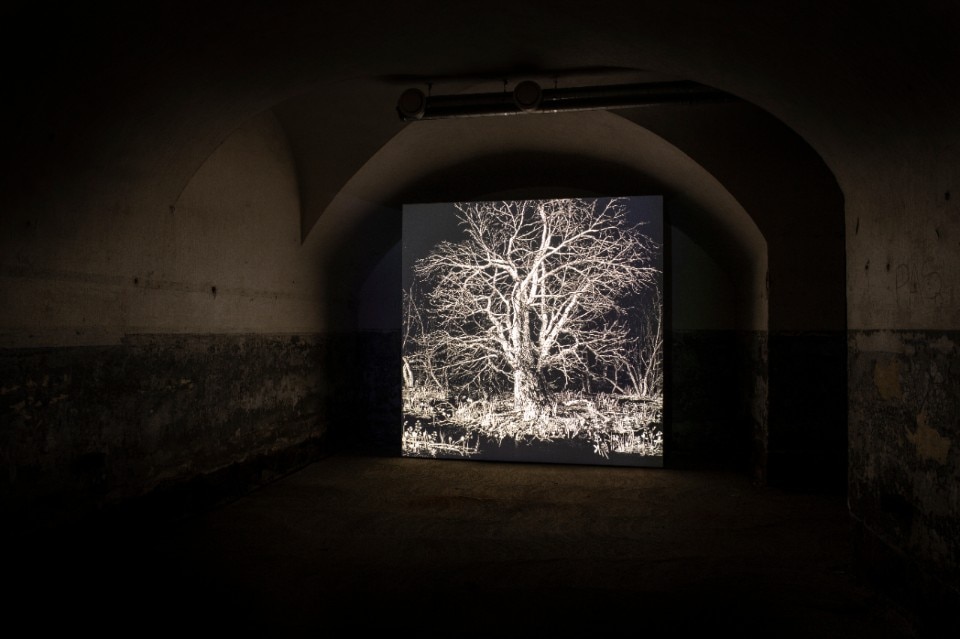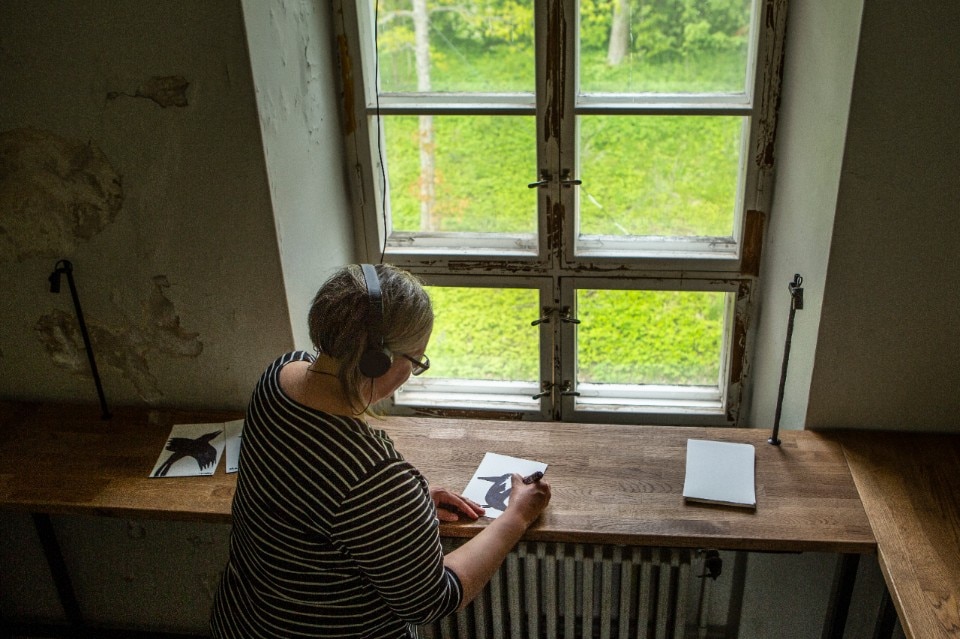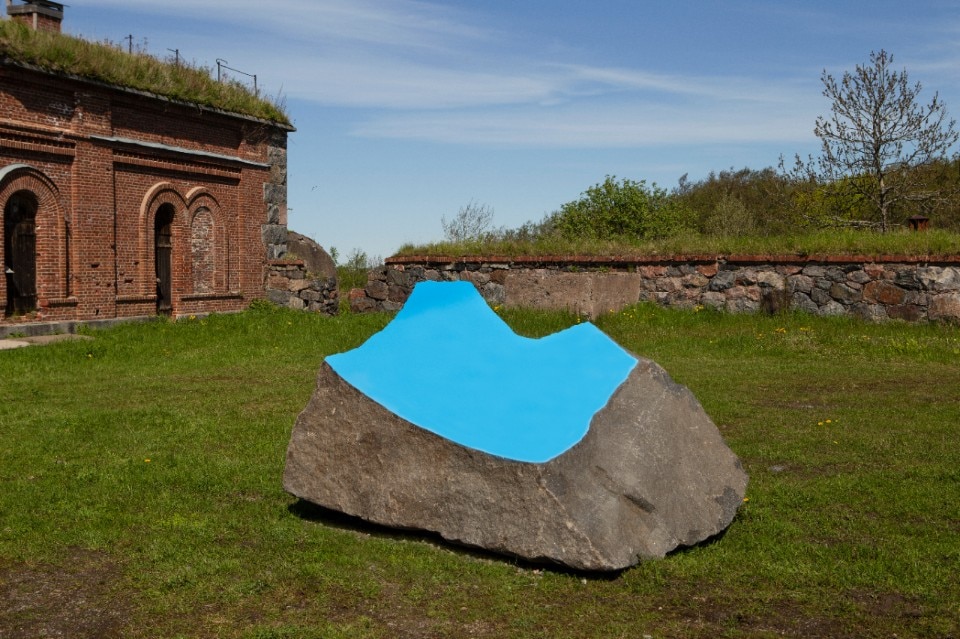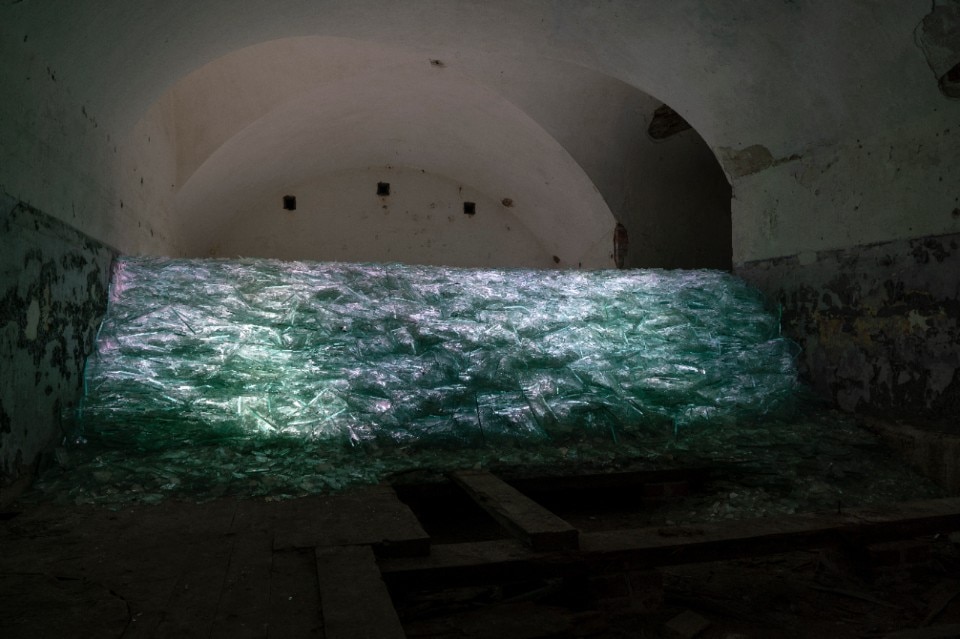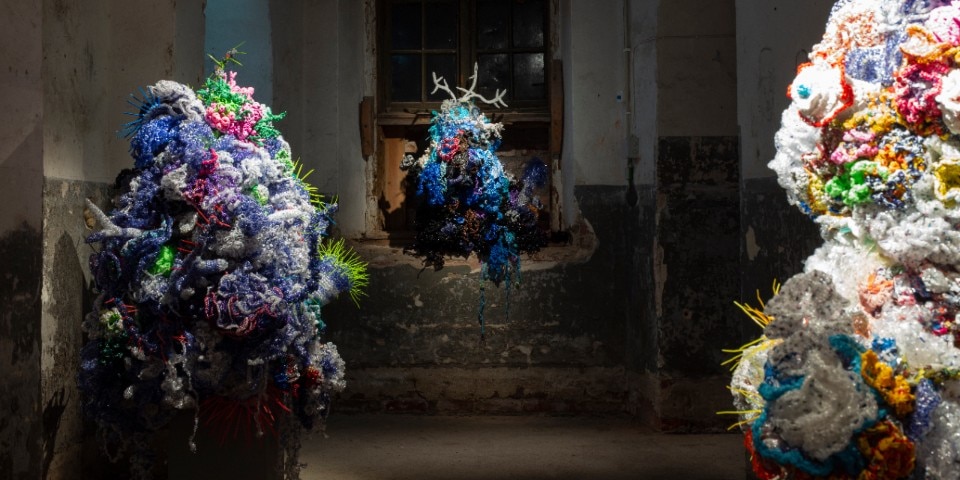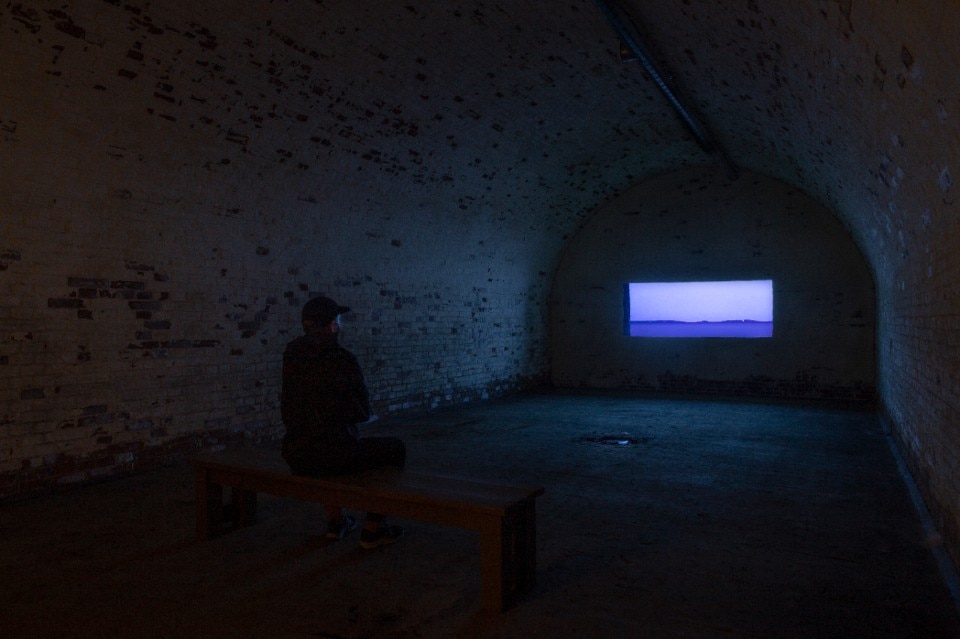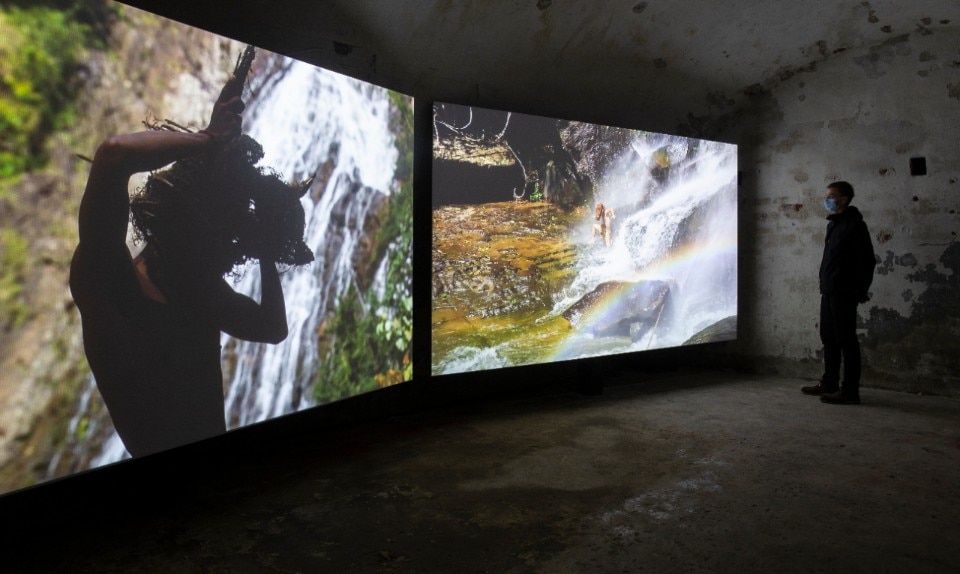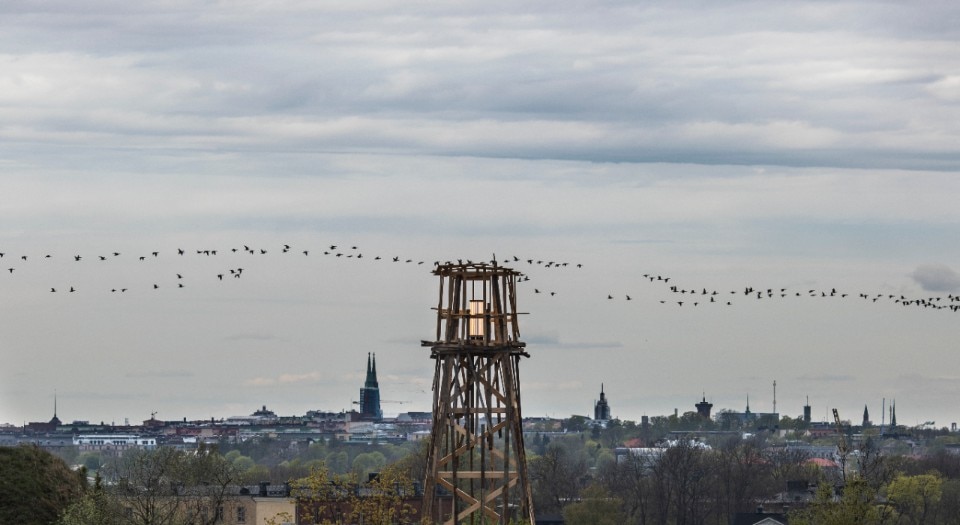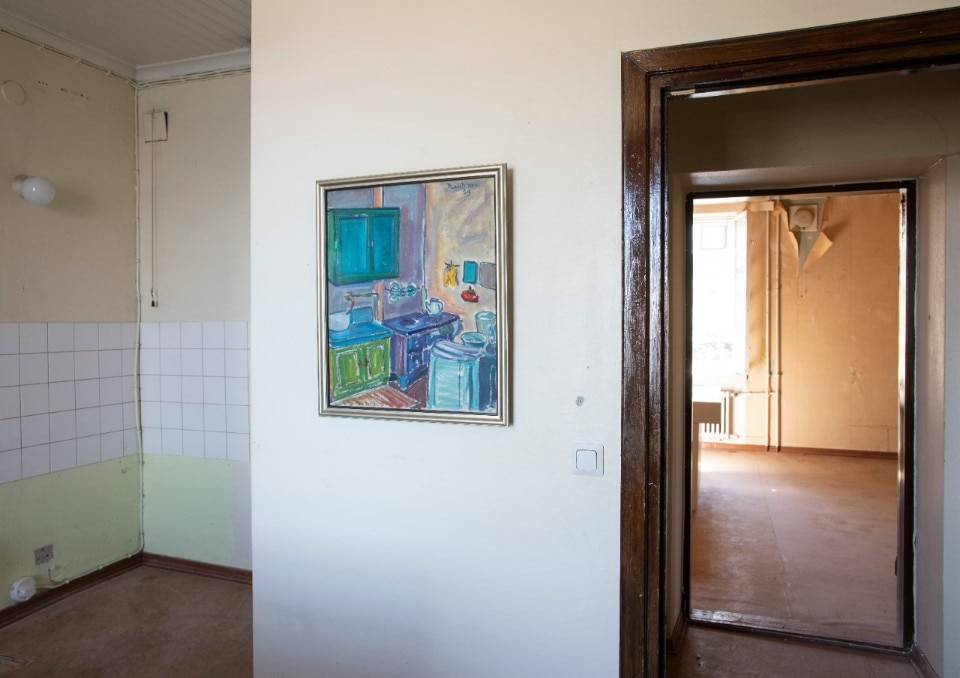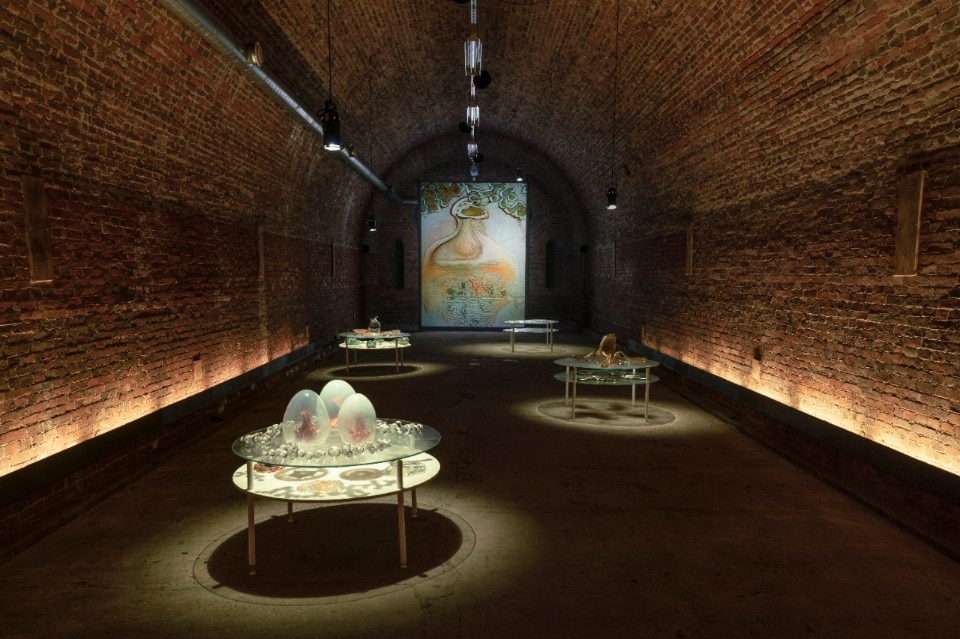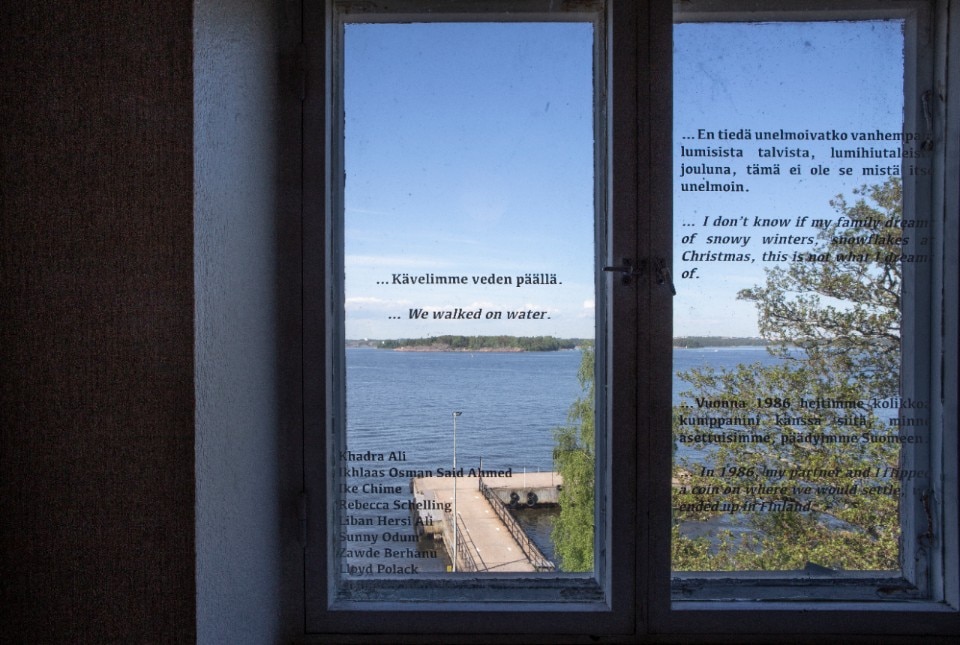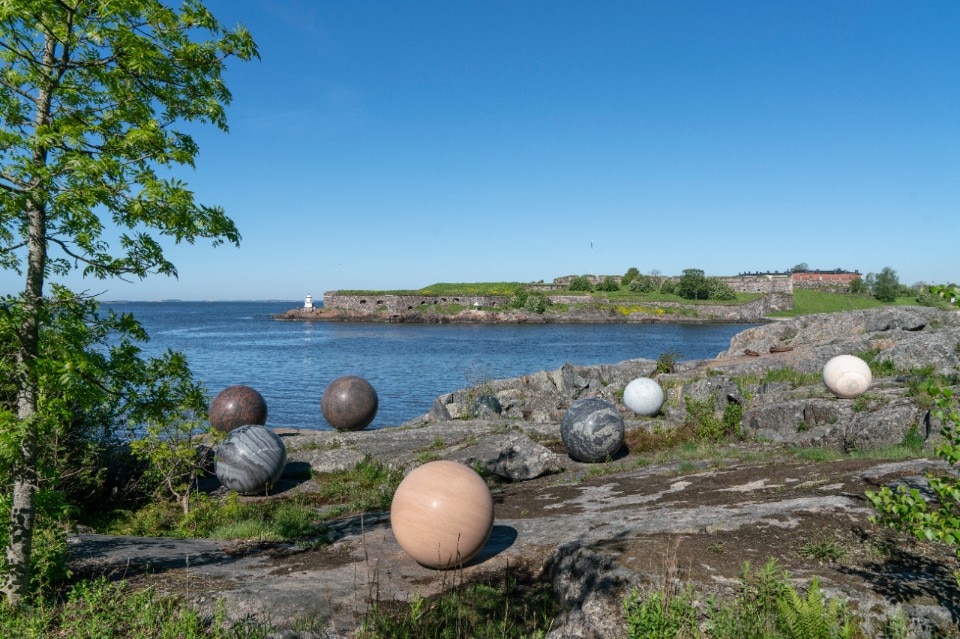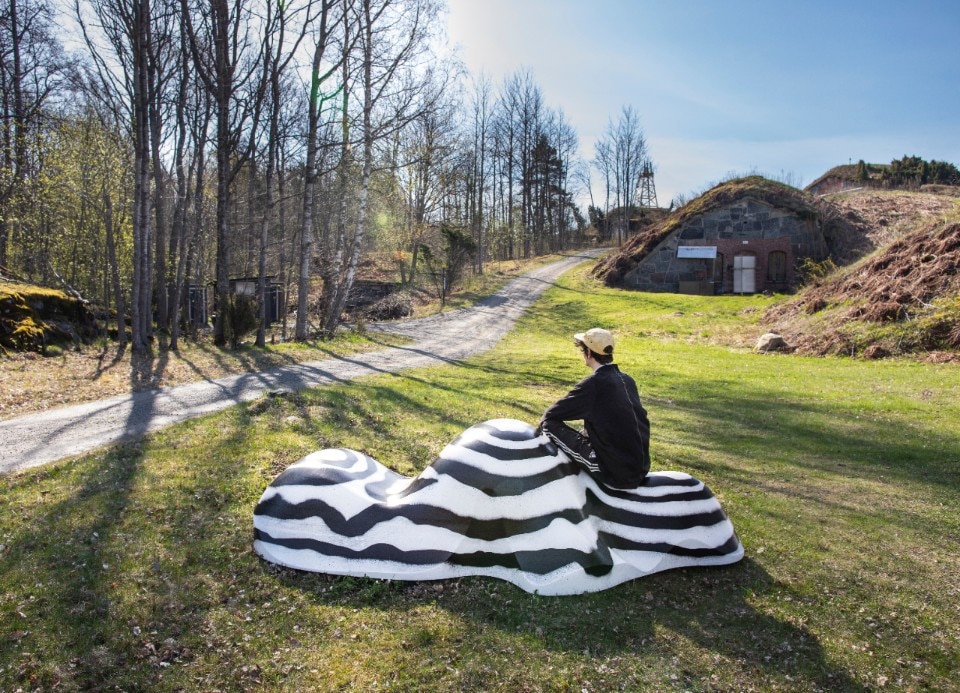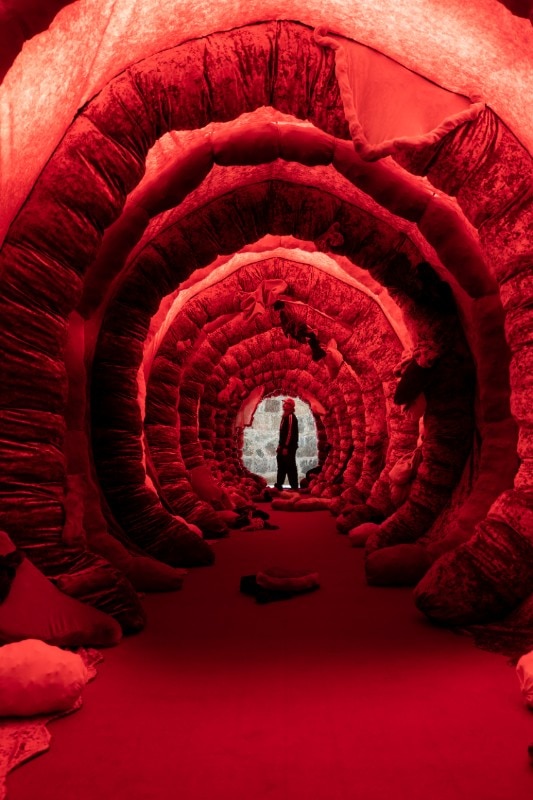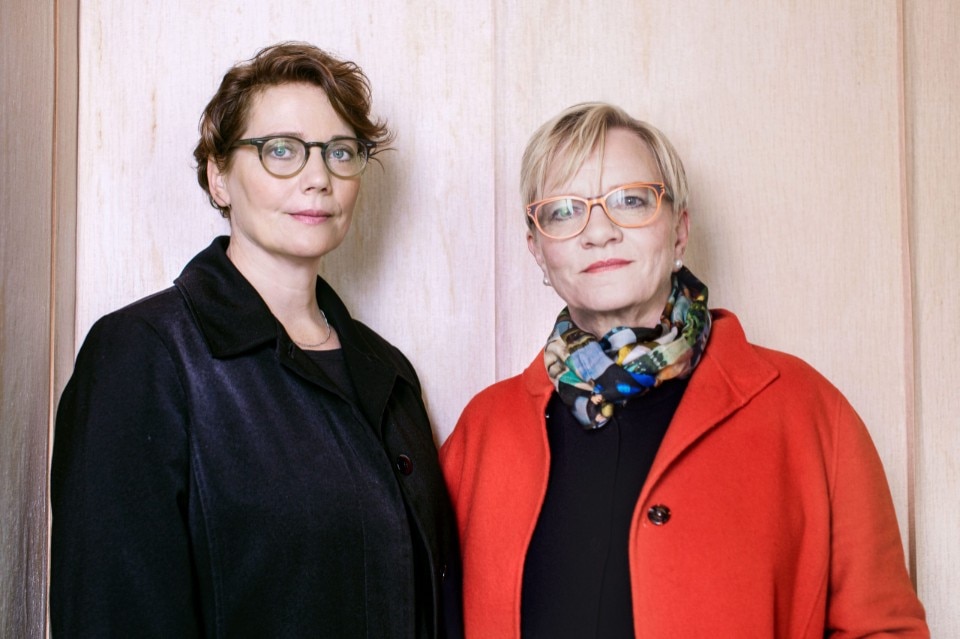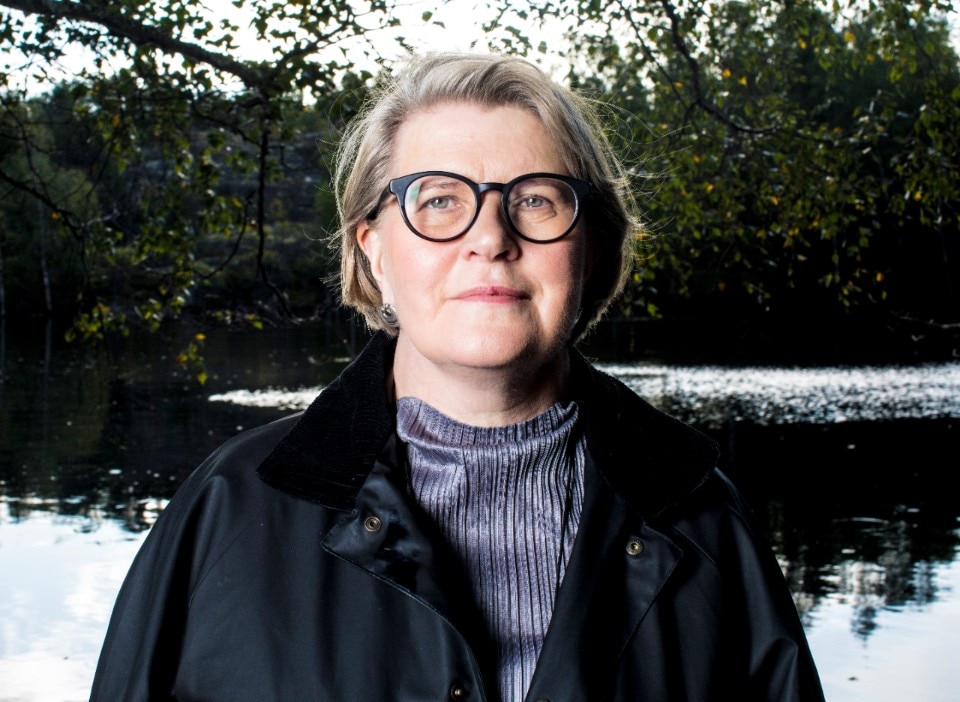It was supposed to happen in 2020, but the pandemic forced the organisation to postpone it by a year. The inaugural edition of the Helsinki Biennial opened on 12 June and will end on 26 September 2021. Set on the island of Vallisaari, a former military base in the Helsinki's archipelago, the Biennial offers countless opportunities to rethink these events respecting the ecosystem and the history of the places hosting them. “Relationship to Nature”, “Boundaries and Identities”, “Time and Change”, and “Empathy and Community” are the four macro themes outlined by the works of 41 Finnish and international artists.
Helsinki Biennial 2021 is presented by the Helsinki Art Museum (HAM). It is directed by Maija Tanninen-Mattila, director of HAM, and curated by HAM head curators Pirkko Siitari and Taru Tappola.
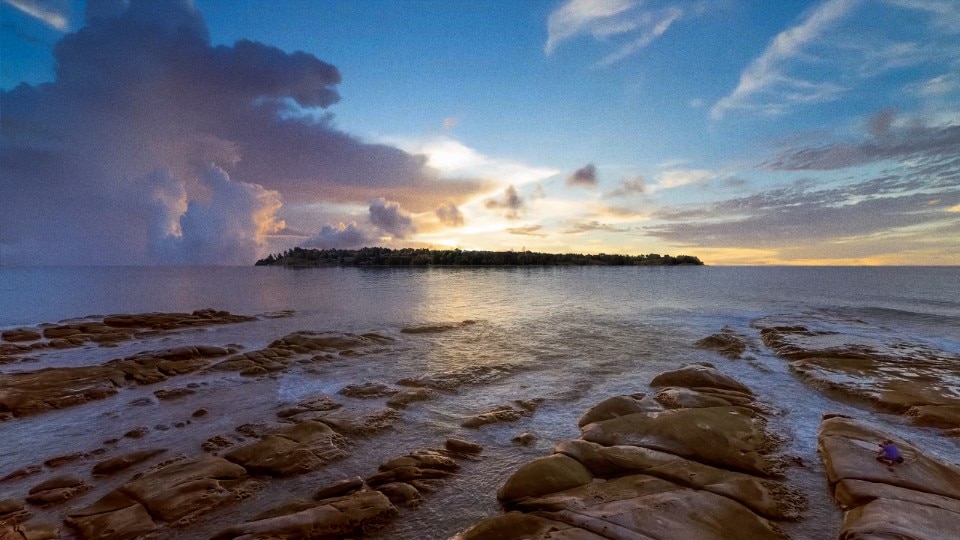
"The Same Sea", title of the 2021 Biennial, fosters reflection on the notion of "interconnectedness" and the relationship of interdependence that binds humans to the planet they inhabit. A bond that emerges – even strengthened – as soon as you land on the island, after a 15-minute ferry ride from Market Square, in Helsinki. A short journey marking an experience that immediately transcends the boundaries of the ordinary museum visit.
One of Helsinki's lesser-known islands, Vallisaari served as a military base and fortification during the Swedish Kingdom and Russian Empire. A military base for pilots in the 19th century, it hosted a meteorological station from 1946 to the summer of 1965; during World War II, a German-made air surveillance radar was placed on the island.
Today, every corner of Vallisaari witnesses the re-appropriation of nature over human intervention. Partly reopened to the public in 2016, the island boasts one of the most diverse natural landscapes in the metropolitan area, with over four hundred species of plants and a thousand species of butterfly. To protect fauna and flora, some areas of the island are still closed to visitors.
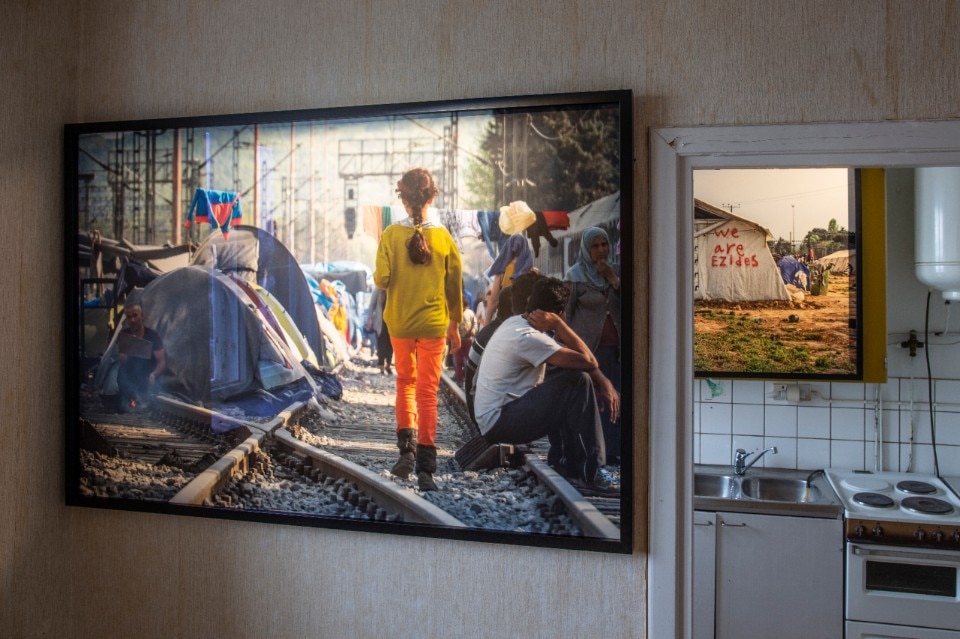
Helsinki Biennial is a free event running along a three-kilometre itinerary across towering trees, colourful mushrooms and peaceful lakes. Buildings and warehouses used by the Finnish defence forces are still standing on the island; among them is the former Pilot House. It contains furniture and objects from the time when its rooms, facing the sea and surrounded by the forest, were inhabited. The building has been secured by a team of specialised engineers and now hosts works of art addressing contemporary issues, including displacement and historical memory. A red thread linking the island of Vallisaari to distant territories, the past to the present of the area.
Paintings by Topi Kautonen (1921 - 2011, Finland), who worked in the island's meteorological station in 1949 and depicted the surrounding landscape, are presented in one of the rooms, while another displays the hypnotic photographs of Mario Rizzi (1962, Italy), describing the living conditions and dignified stories of refugees from the camps in the Middle East.
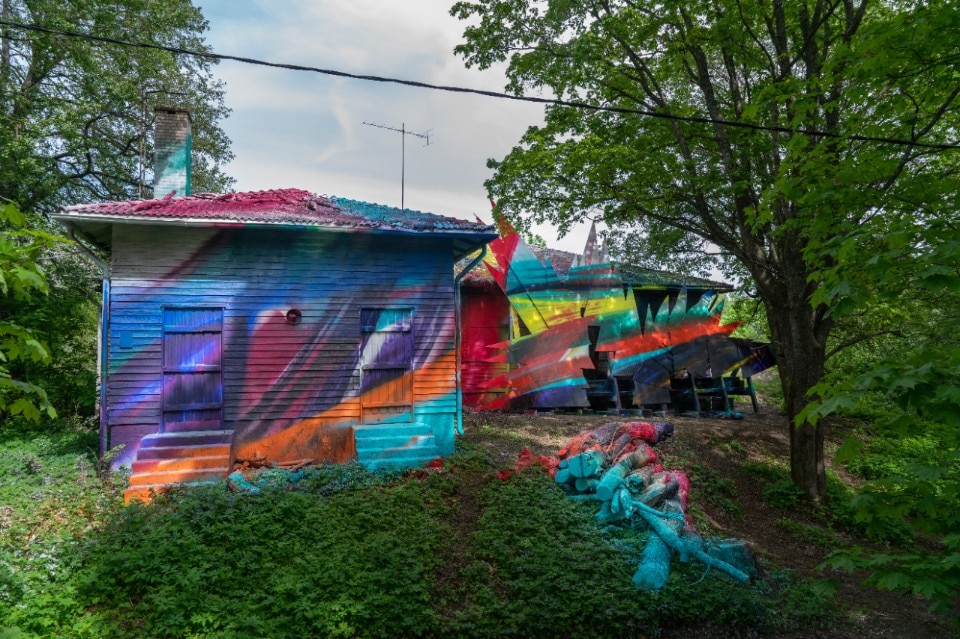
Among the works on display, a number of new site-specific commissions were produced by the artists after visiting the island.
The installation 'Quay 6' (2021) by Finnish artist Jakko Niemelä (1959) reflects on the catastrophic effects of climate change. The wooden structure reaches the symbolic height of six metres: if the Greenland glacier were to disappear, it would cause the sea level to rise in equal measure.
Several site-specific installations intervene directly on existing buildings. It is impossible not to notice "Shutter Splinter" (2021), a monumental work by German artist Katharina Grosse (1961), who has entirely covered the island's former school (operating between 1950 and 1980 and now uninhabitable due to toxic bacteria) in flashy, vibrant colours.
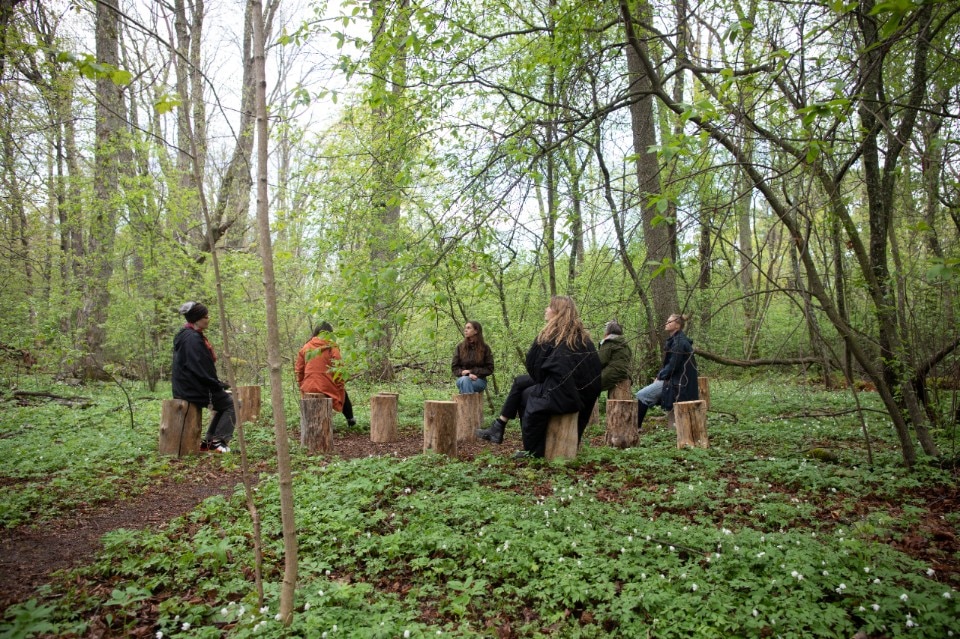
The shades and sounds of the forest and the sea not only frame but do enrich the works exhibited through the unpredictable charm of nature. "FOREST (for a thousand years...)" (2012) is an immersive sound installation by the duo Janet Cardiff & George Bures Miller (Canada). The work interacts directly with the forest, merging with the sound generated by the wind as it flows through the trees and, on certain picturesque gloomy days, the ticking of rain.
However, the visitor is never just an observer. Meiju Niskala’s (1978, Finland) "It Occurred to Me, But a Bit Too Late" (2021) is a destabilising mix of happening, public art and poetry. It invites visitors to explore and interact with their surroundings by following the artist's instructions in headphones. The natural landscape becomes a powerful anaesthetic and a source of reassurance against tragic personal reflections on life and death.
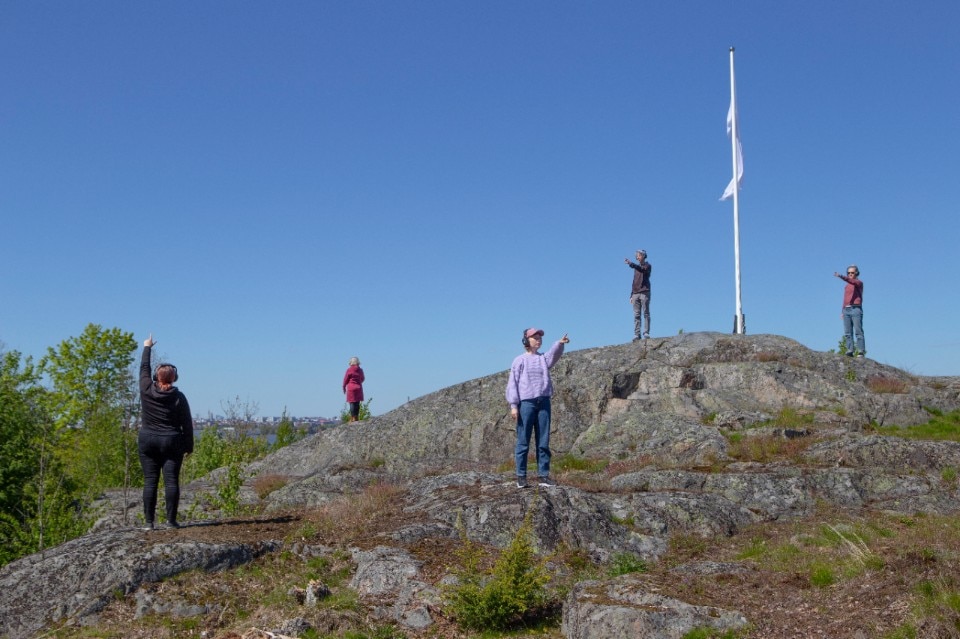
Eco-sustainability is central to the Biennial. To respect the ecosystem, all works were conceived as ''temporary artworks'' and will leave no trace on the island once the Biennial is over. The placement of each artwork has been assessed with Metsähallitus and the Finnish Heritage Agency, with a focus on the preservation of nature and historic buildings and in line with the Helsinki City Strategy for 2017 – 2021; the goal is to make Helsinki carbon neutral by 2035. An environmental programme has also been developed for the Biennial based on the EcoCompass environmental management system.
Care and environmental awareness, sensitivity towards sustainability, which characterise the works on display and their temporary nature, make Helsinki Biennial an emblematic model for rethinking these events in the light of current climatic and social upheavals; an eco-sustainable, thoughtful, and non-invasive Biennial, making us dream of the next edition.
- Title:
- Helsinki Biennial 2021: The Same Sea
- Where:
- The island of Vallisaari, Helsinki archipelago
- When:
- 12 June - 26 September 2021
- Tickets:
- Free entry
- Directed by:
- Maija Tanninen-Mattila
- Curated by:
- Taru Tappola and Pirkko Siitari


